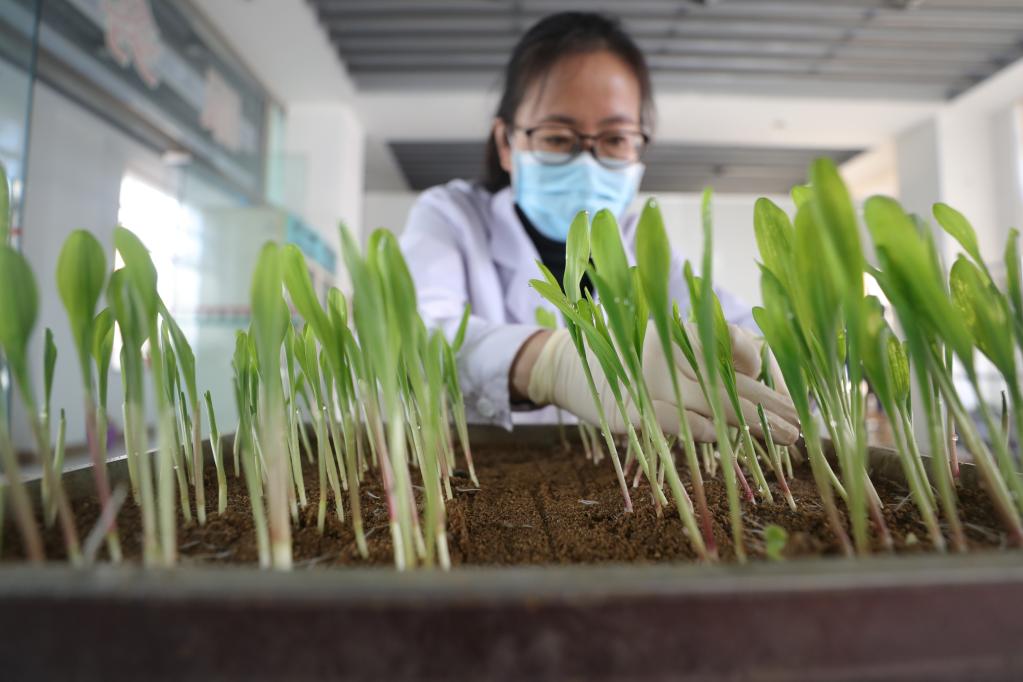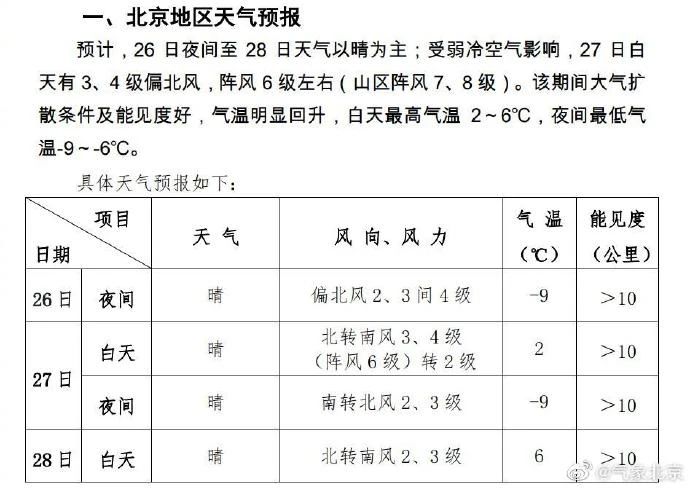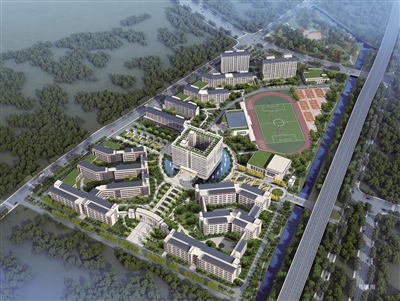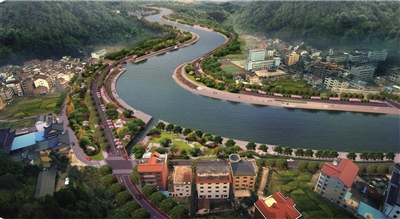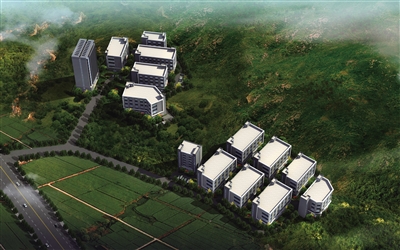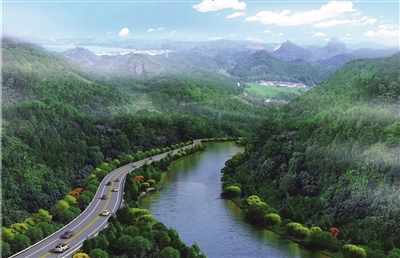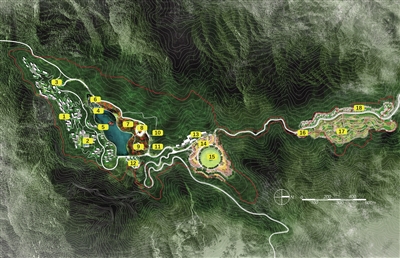It is another year of Hainan Island International Film Festival and another year of master class.
The first guest of the master class of the 3rd Hainan Island International Film Festival this time is the famous director Wang Xiaoshuai.
In this game called "Movies are a gaze at time."In the master class, what kind of stories and experiences will the little handsome director share for us?
What kind of "sharp" questions will young directors ask? The answers are all in the following.
■ (Director Bai Xue [Over the Spring]): Dear guests, media friends and audience friends, hello everyone!
Welcome to the master class of the 3rd Hainan Island International Film Festival.
I’m Bai Xue, and I’m glad to have the opportunity to meet you in the beautiful Sanya today.
Since the first Hainan Island International Film Festival, master filmmakers at home and abroad have been invited to share their film creation techniques and uncover the secrets behind the film every year.Exchange stories and experiences with young directors on the scene.
This year is the third year of the master class of Hainan Island International Film Festival. We welcome the film director Wang Xiaoshuai for the first activity of this master class.

Director Wang Xiaoshuai has been in the film for more than 20 years and directedThirteen feature filmsHe has been shortlisted in the main competitions of three major international film festivals in Europe for many times and won many awards.
From the first film in 1993 [Days of Winter and Spring], director Wang Xiaoshuai discovered the secret of the film.
Whether it’s [17-year-old bike] or [I’m 11], until the nearest [Forever].
He combs the time and stares at it in his works.
In the film directed by Xiao Shuai, there is his unique personal life imprint, such as carving and tracing the third-line memory.
By reviewing these memories, he re-wrote the history in which this memory lived.
Next, let’s share a glimpse of the film world directed by Wang Xiaoshuai with a short film.
Next, let’s give the warmest applause to the speaker of today’s master class-Director Wang Xiaoshuai.
Director Shuai said hello to everyone first.
Wang Xiaoshuai:Hello everyone! I didn’t expect so many people to be so grand. I’ll try my best to support me by the edge of the snow and talk to you more.
■: Director Xiao Shuai and I should call you Uncle Shi.
Because my teacher is Mr. Wang Rui, the teacher of the director department of Grade 03, and I am a classmate of your class.
I’m actually very nervous today, but I think it’s more about asking an elder. Let’s ask you questions together.
In fact, your first two films[Days of Winter and Spring]and[Extremely cold]They are all about artists. What prompted you to shoot them at that time?
Wang Xiaoshuai:This topic has been asked since the beginning of filming, and it has been talked many times.
The audience here today are all new audiences or listeners. I don’t know much about them, so I will repeat them a little.
After graduating from the Film Academy in 1989, China was still assigned at that stage.
As soon as you graduate, you will be assigned to a film factory, and then you will slowly practice and work in the film factory.
Then it is possible to direct a film many years later, which is still such a tradition.
So I was assigned after graduation.Fujian Film Studio.

I found that after I arrived in Fujian, the situation was not as good as I expected.
Because at that time, when China films reached that stage, the fifth generation was born.
The path of their growth is from small factories, and factories like Guangxi Factory and Xiying Factory stand out from the encirclement.
Directed their films that have been very classic so far.
So after I arrived in Fujian, I thought it was possible to follow the path they had taken again.
Because Fujian factory is also a small factory, in those days, people who made movies were all targeted and planned economy.
Therefore, the Fujian factory had an index for one year at that time, which meant that the film factory was allowed to make one film a year.
If you get good grades or have a lot of money or something, you may apply for the second part.
Therefore, although I was full of confidence after I went there, I felt that I had learned something from the Film Academy. I was young and had a passion for movies, so I could shoot there.
But it’s still young to think about it now, and the idea is too simple, because although there are not many people in a film studio, it only has one indicator that it cherishes every year.
Then how can it trust a young man who just graduated?
Although the fifth generation had this history at that time, it stayed for a while, followed the internship and made notes.
But later, I still couldn’t do it. I thought it might delay my youth, and then I sneaked back to Beijing alone.
After sneaking back to Beijing, I actually think of it as the first generation of drifting north. I have lived and studied in Beijing for ten years. Once I leave, I will be an outsider.
There is no place for you in such a huge Beijing.
So at that time, I thought there was no reason for me to return to Beijing. It seemed that someone was looking at you with a strange eye. You didn’t go to Fujian, so why did you come back?
In my heart, I felt that I wanted to stay in Beijing as an excuse, as if I didn’t stay here, so what should I do to prove my value, so I went back to thinking about movies.

I had two choices.
One is that I haven’t painted since I graduated from the middle school attached to the Central Academy of Fine Arts, and I can start again.draw picturesPainting was very popular at that time.
But I think what I love most is actuallyfilmSo I thought about going back to the movie.
Only if I have a movie in my hand can I prove an ID card for staying in Beijing.
It’s like Xiao Gui in [17-year-old bicycle] coming to town. I have a bicycle, and I have tools to eat before I can stay here.
How to start this first step? I have nothing, no shelter, no food, no money, just one shoulder.
What I found were our recent classmates who used to be in the Film Academy or friends who started to play in Beijing, as well as the continuous friendship between Liu Xiaodong and Yu Hong when they were in the attached middle school. My eyes can only go here as far as possible.
I have no ability to see farther through these friends.
So just take the nearest person from Liu Xiaodong and Yu Hong.
Just like when we painted, we said to be a model, you are our model, I will paint you, and I will shoot you. This was the most original idea at that time.
Just because they are painters, and then they are close to my life, the life in the middle school attached to the Academy of Fine Arts is vivid, and the first [Days of Winter and Spring] is opened.

Then I wanted to solve many regrets left by the first film, so I opened the second film, Extreme Cold.
At that time, my eyes couldn’t see through it, because the money, strength and surrounding resources were not enough for me to make a movie that seemed to be very formal.
So at that time, I said, OK, let’s do manual workshops like the new wave, and after a little work, we started the second part.
And the second part just heard a real thing that happened in 1994:
A action art killed himself, which had a great influence and spread.
Then, combined with my own mood at that time, I felt very depressed, and combined with my own mood, I made another [extremely cold].
Therefore, it is very coincidental that these two films are related to art, that is, to their own growth experience.
At the same time, it is also related to the farthest distance you can reach.

Then at that time, I thought to myself, when we filmed [the days of winter and spring], we also filmed [the extreme cold].
I often ask myself, some close friends ask me, are we calling it making a movie?
Because many students in our class love movies, they will be very excited to see the studio of this real movie.
There are elevators, lights and cameras. I think this is a movie.
And we doubted ourselves when there was nothing.
Then I also asked myself over and over again at that time, giving myself hints over and over again:
However, we may not have such a large scale, such good equipment, and no professional team to support.
But after all, I pressed the switch with the camera and turned the film, and my subject was trying to interpret my ideas and scripts, so I think this is called.shoot a film.
Just to a different extent.

Then our film is called a film of muttering, which means talking to yourself, asking yourself, and doubting yourself.
Then, at that time, you might think that you are individuals, and that you always take yourself out as if you were talking about something. This is not a movie.
In our traditional cognition, the film director and the author are behind the camera, that is, pointing the camera at the outside and shooting outside, shooting workers, peasants and soldiers, shooting society and shooting these things. This is called a film.
In particular, China’s past tradition is not allowed to take out the heart of a creator.
It means that the first time we met, I thought it was okay.
I couldn’t shoot it, so I turned the camera around to shoot myself and regarded myself as a member of this society.
I am also living, and I am also living.I have my own thoughts, and I have my own difficulties.
Under such circumstances, I began to make my own independent film.

■ After listening to it, I felt that there was something that really touched me.
I believe that every young director has a strong energy in his heart when he makes his first work, and he has to shoot that energy.
I remember reading the story of extreme cold in a magazine when I was in high school.
I actually envy that era. I was in 1984 and I was too young in the 1990 s.
But what we have actually experienced is the stage from university to early 2000 after the reform and opening up.
In fact, the whole society has tended to be stable, and I think China in the 1990s is actually a particularly fascinating period.
Wang Xiaoshuai:Right. We used to have a book calledOur eightiesWhat Acheng recalled, it evoked feelings including my own.
I think these people born in the middle or early sixties are really lucky, rare and lucky.
When our youth just began to grow, China just entered the stage of reform and opening up.
When I was young and ignorant, when my values and outlook on life began to have a little idea, I just experienced the whole decade of the 1980 s.
Nowadays, many people in that era recall the decade of the 1980s with emotion.
It is said that this may be the best golden decade in China.
In this decade, some of our elders are more mature and older than us. Some people have entered the society, are already exporting their things, and are already creating their own things.
And we are actually following behind, so we are not lucky not to be left behind by this decade.

And this decade is the past. The whole education in China came from Eastern Europe, Europe and the former Soviet Union.
In that decade, the information and ideology of Europe, Western Europe or the United States began to come in, breaking the simple dualistic ideology of Eastern Europe and the former Soviet Union at that time.
Therefore, the ten years when we were studying happened to be in contact with both sides, making ourselves look at the world like a child who just opened his eyes.
Everything broke out at that moment, so we experienced this.
After we graduated, we entered the nineties, and as you said, it tended to be flat.
However, the gap is still relatively slow, and all the enthusiasm in the 1980s, all the thoughts at that time, and all the very free and unrestrained passions at that time are still there.
Bit by bit, it has been flowing until the end of the 1990s, just in time for myself to start filming in the early 1990s.
So those things that were saved in my mind, those impulses in adolescence, those so-called self-thoughts and anger all broke out at that time.
At the same time, catching up with the society really allows all this to happen and express. I am very lucky to have experienced these two times myself.

■ : Maybe the creators who grew up in different times actually influenced you by the times.
You are also influencing some young people behind you through your works.
There is a very important period in your works.Third-line construction.
I believe that I may be a little strange to post-90 s or post-00 s or even me now.
I’m also going to look at some background information before [Green Red] today.
I’d like to hear from you what has shaped you in this growing process.
What do you want to share about this growing experience?
Wang Xiaoshuai:All people who have experienced the third line, regardless of the first generation, the second generation and the third generation, have a common emotional cohesion.
Just think we arethree linesWhen it comes to third-line people, many big structures come out.
For example, the biggest confusion of third-line people is the loss of their sense of hometown.
They left their hometown and parachuted to a place. They probably thought they could go back in a few years, but they didn’t expect to go back all their lives. The next generation was there, and so was the next generation.
In this case, the third-line person has a special emotional password.
This emotional code is linked to each other, and everyone knows about that history from food and living habits.
However, this emotional password basically exists only in the third-line people, and others don’t understand what the third-line people say to others.
Even in Guizhou, when you leave our factory and go to Guizhou, they will feel "They are those people.",after a long time even they feel very poor, only exists in this folk saying.

But when I was growing up, my parents were also third-line, and I also experienced this confusion.
I don’t know where I come from or where I belong.
In this process, I gradually became unconvinced.
That is to say, many third-line people don’t say that they have had such an experience since they began to go out slowly in the mid-1980 s, because they feel that this experience is not good for their future development.
There is also the whole information and the national level, because we all know the educated youth, the Great Northern Wilderness and the Xinjiang Corps, and we all know the big plates that have changed since the founding of the People’s Republic of China in China.
But only the third line, because it is a military enterprise, was confidential at that time.
Many of our factories have no names but code names, so a large number of tens of millions of people are not mentioned there.
So when I came out, I had a feeling in my hearta burning desire.
I want to tell others that we are from that place, that we came from there, and that so many people are still there now, and they are still experiencing a very, very special life that others don’t understand, and even after others know it, it will be incredible.
I want to express it, so this is after I was lucky enough to be a director, picked up the camera and made these movies.
In fact, deep down in my heart, I said that one day I must put something about the third line in the movie.

During the period, it has been repeated many times, and it has failed to go, and it has failed many times.
Until 2003, at that time, it was actually ten years since I first made a movie.
At that time, our top management said that China’s films were changed from a business unit to an enterprise, and then they were connected to the market and made films with things from the market.
At that time, it seemed to give me a turning point. Now you can make movies and embrace the market and this reform.
I think since I have this premise, I will do it, so I will take out the ideas and scripts that I have accumulated for many years.
At that time, [Green Red] was originally called [Good Wish], and I came based on Augustus’ feature Bergman [Best Wish] (often translated as [Good Betrayal]).
I said that this is actually what I expected so many people to go for the whole third-line branch. I really hope to give them a blessing and give them a really good wish.
I shot it at that time.
Moreover, it was very difficult at that time. I went to Guiyang several times, and I saw that the surrounding area was changing. All the buildings were rising, the roads were under construction, and all the factories were changing. I was very anxious.
At that time, China films didn’t have a good industrial system and good technical support as they do now. At that time, they didn’t.
I think if I don’t shoot it again, I won’t be able to shoot it at all, and it will be completely erased from my life, memory and the earth.
So I gritted my teeth,I find that I bite my teeth every time I make a movie, and I’m so stupid that I want to make it happen.

■: Movies have a very special function, which can record the characteristics of an era.
I think among many films, the narrative films at that time actually solidified that era.
Do you think that in your personal memory and the memory of the public, what you just said, for example, the third-line construction may be a relatively unexpanded memory.
How do you think you can find the point to communicate with the public in this process?
Wang Xiaoshuai:This is also my repeated question in making movies, and it is often mentioned.
You have to find the common ground, empathy and so on. I think it is the most basic bottom line for the success of the film, but I think sometimes you can’t find it, or it is very special.
I think of it as aSpecial filmShoot.
Movies like the third line were made at the beginning, including now. When you mention it, you will also question why you are always working on the third line. There will not be many people watching it.
I can only ignore this matter, I can only say that this matter is what I want to say, this history and this reality is what I want to express, and I have to say it.
Because I watched my parents go from a young man in his late twenties to a strange place.
I’ve been there all my life, putting my youth there, and then throwing my major aside, so I’ll live forever.
So I think people like my parents are everywhere. Our neighbors and classmates’ parents were all senior intellectuals at that time.
If they stay in places like Shanghai and Beijing, they may be able to play a better technological advantage, but after they get there, it will be very beneficial to the western region and their construction.
But it has a certain influence on their personal growth and the display of their talents, so I watched them grow old.
Now many people have died, and they are buried in the local area.
Therefore, I feel that I can’t live without such a period of history.

At that time, I also looked around. Among the tens of millions of third-line people, if I was a director, I was the only one.
If I don’t talk about it, there is no way to talk about it. Besides, I just said three. Why did I say three? Because it was not a phased thing at that time.
There are stages of educated youth. Of course, many of them have stayed in the local area, married and have children, but some of them have returned to the city after a stage.
Third-line people are not phased, they are continuous, and the first generation, the second generation and the third generation are so continuous.
Don’t say three movies, I can continue if it is possible now.
Because our generation has become fathers and their children are growing up, when I went to communicate with them, I found that filming them is also a completely new understanding of the third line.
Now you ask him where you are from, and 100% of these grandchildren who are teenagers now look at you with their eyes fixed on you.
After you asked this question in the past, he couldn’t answer it at all. His eyes were looking for his parents and his grandparents to confirm how to answer this question. I will do it again when I have the chance.

■ I find this particularly interesting.
Because I was also a very small social group when I spent the Spring Festival, that is, cross-border schoolchildren.
When I ask them where they are from, their eyes will indeed dodge. I think every individual is branded with an era.
So I think in this issue, it is both personal and contemporary.
So maybe the characters you wrote lived in the background of that era.
So he will definitely bring out the whole big thing.
Talk about your recent new works.[Forever and ever]This work is actually a very time span, a span of thirty years.
It is said to be the first part of your homeland trilogy. How do you define homeland in this movie?
Wang Xiaoshuai:After the third line was finished, the biggest problem was in front of me.
I’m going down. Yes.How to createBecause I can keep an impulse to make a movie when I was at the beginning, when I was the youngest, or I will make a movie with impulsive and exciting themes.
I can cut in from any level of this society.
But slowly with the passage of time, my age grew up little by little.
After everything and seeing everything, I think I may still need to put my eyes down.
I still want to have a chance to talk about the history beyond the third line and all that we have experienced in Chinese and ordinary Chinese.
Otherwise, I may not be so young at a certain level in a certain section, and my eyes can be set farther, unlike at first I can only see my close relatives and friends.
Now I can see farther and think farther, so I decided to do the next trilogy.
Of course, call.Home trilogyThe words are also about the concept of Chinese, our hometown, our land and our identity.
These are the experiences of ordinary people in Chinese.
Maybe young people don’t know much about it now, but from the forties, fifties and sixties, these people grew up in this way, and everyone bears the brand of the times.

■: Including me, I am equal to my parents who came to Shenzhen in the early 1990s.
So when I arrived in Shenzhen at the age of six, I was a little skeptical when I asked where I was from.
Wang Xiaoshuai:I don’t agree with them when they say home country. I don’t have so many feelings about home country. I just said that I still focus on our ordinary family.
Because I think that individuals form a family, and the family will eventually become a country, which is the most basic cell and element.
So I focused on them.
Although it seems to be described as a big history and epic by others, in fact, it still doesn’t leave me the earliest. I am staring at a few people and a group of people to express it like this.
Moreover, this expression is really going to break away from the third line. Although I still run a factory, I didn’t emphasize that it is the third line.
Because I know what I saw, in fact, many, many similar things happened in China besides the Third Line.
For example, our steel works in Baotou and Shanghai Steel Works in Wuhan, in fact, there are many people supporting the whole country, and they also left their hometown to live in a new place.
This kind of environment was magnified by me and I continued to pay attention to it.

About [Forever], the main thing is the loss of children or family planning. If we only talk about it for a while, in fact, there are such movies in China.
Those who have lost their independence and are looking for children, but I don’t think this is enough. It may not be enough for me to make such a thing again.
I need to enlarge it. I have ambition to enlarge it to the historical background of China until now to see how our ordinary Chinese survived and how it survived.
This ambition has promoted this[Forever and ever].
In 2015, I heard a news. I was fine in my room that day. I don’t know where a news voice came from, saying that family planning had stopped. Now I can have two children and three children, and it’s over.
It seems that such a simple news has not stirred up any waves in the society, and there is no response.
But I was stupid in my room at that time. Can this thing be changed? Can it be changed?
We have been used to it for decades, and suddenly it changed. At that time, I was reminded that this matter should be mentioned.

■: I am very much looking forward to the second part of your home works.
Many of you here today are young creators, and I believe that one of you will want to know more about your creative path.
At the very beginning of your creation, of course, sometimes you may start from your personal experience.
But maybe slowly you will change from the first person to the third person to see the world.
I really want to know the origin of your creative process, and sometimes what motivates you to move forward.
Wang Xiaoshuai:From a conceptual point of view, I always feel that we should keep a particularly sensitive, fragile and soft heart, because only in this way can you feel all the changes that have taken place in this society.
If you are tough, if you do something, and you don’t care and think about anything, you may miss something that touches you or touches you.
So I think to make such a movie, we must first have a very soft heart to touch and feel, feel those anger, thank those unfairness, and thank these ordinary people for their helpless or very helpless eyes.
These things will touch you, and then you can find out how to get close to them, how to cut in from their point of view, and think about this problem.
In addition to these basic things, you have to pay attention to reality, that is to say, you are aware of everything that happens in this reality.
Originally, we relied on newspapers and TV, and now we even rely on Tik Tok or even some short videos or some friends to spread.
These things will remind you, and they will find you a possible exact point to go in. Maybe you have a big direction, and you have to find the exact point of the story, just like I did [Forever].
I was stupid when I heard the news. It was a moment. Without this news point, you might have lost your feelings about Chinese’s policy from the late 1970s to the 1980s and our life style was like fish in water.
I feel that everything is normal, and when it comes to an abrupt end, you find that it is a thing, which may touch your anger, thinking, reflection and creative impulse.

■: I think that in many cases, especially after you have experienced China movies, there are actually several specific different stages.
Then your work is equivalent to actually expressing concern for individuals, especially now, after all, movies have a commercial attribute.
Do you think you will sometimes think about how to balance it, or do you think this problem need not be considered from this angle?
Wang Xiaoshuai:This kind of thing is also asked the most, and many people who are engaged in this film will also think a lot.
However, I think this aspect of the problem should actually be considered by switching the angle of the point of thinking to it.
It is not unified.
For example, from the perspective of creation, you create this type of film or a little bit of film that you think is a little thoughtful or a little personal. In fact, you do it from this perspective.
Then you don’t need to make it think about the question you just asked.
If I really think about this issue from the perspective of a film industry, then it must take into account the industrial side of the film, the market side of the film, including the actors.
After I play this role, he will also think about what role I want to change next, and everyone will solve the problem from everyone’s point of view.
And I don’t think it is necessary to put the balance on the director. For example, if a director is very successful in business, I think he should be congratulated. He has something very sensitive to do this.
Some people may not be successful at the box office, but they express themselves well, so they should continue. This is what I think we should face together with the problem of film diversity.
So it is difficult for me to answer this question when asked.
That is to say, do I have a little industrial background, or do I have a little film foundation? I believe so.
But I have more interests and more energy to focus on the things I just paid attention to. I can’t waste my time and energy.
From my point of view, when making such a movie, I have been asking myself, just like when I made my first movie, whether it is worth it, whether it needs to exist, which is what I have been asking.
But after this process, I have accumulated such a confidence bit by bit, that is, it must be needed, and such a film must not disappear in China’s film version.
Besides, I think it will definitely turn over in the end, so I am enjoying the process of making such a movie, and I see that it will be taken seriously in the future.
Because a cultural level, an artistic level, or a national level, its culture is valued and the degree to which art is valued.
If it has been in a very low situation, it is actually not good for the whole nation, so if you take a long-term view of it, it will definitely turn over in the future. This is my confidence.

■ I have a feeling that when [Spring Festival] was shown at Osaka Film Festival, many people in the audience were unexpected. I didn’t expect that there were many white-haired old ladies and gentlemen.
I had a feeling at that time that the audience needed to be cultivated.
In fact, as creators, it is actually to lead the audience to a more connotative content level and have a more aesthetic audio-visual feeling through our works.
I think I was particularly happy when you said that just now. I think now, in fact, more and more young directors are still making many excellent films of different types.
I think it is a very lucky thing for the audience and a very happy thing for the creator.
Wang Xiaoshuai:When we look at it carefully, it seems that the big block is rich and good, but in fact there are many meaningful things under it that have never been broken, passed down and done.
The portrait hereDirector Liang MingIn fact, I have been doing it all the time, including your movies. These things have been passed down and have always been the most important thing.
Moreover, when it is exported, it is actually the most vital output, not organized, but naturally received by others.
One more thing, you feel that some of our films have been seen by others in some foreign film festivals or screens.
I think one thing is also true. This kind of movie may not be as popular as we thought. Why is it seen by others? Besides, young people are not necessarily very young. It’s a joke.
Their life is too lonely. On the other hand, there is such an activity when they come to the cinema. It is a great comfort for them to get together in the cinema.
He can’t have other entertainment activities, so the film is preserved and needed.
This is also the fundamental reason why I think everyone is missing the cinema and calling for actually going to the cinema to watch movies.
There may be too many recreational activities in Chinese, and he thinks it doesn’t matter a little, but they are lonely in Europe and America, so cinemas will be taken seriously.
Of course, I don’t want people in China to be so lonely and lonely, but on the other hand, if there is no cinema one day and these things disappear too quickly.
When you need all this, it’s a pity that it disappears.
In fact, giving it a space for each of us, each ticket and each movie is actually protecting it, and it is a process that urges us not to be too lonely in the future.

■ : that’s very good. I think in the present era, when I look back at some of your works.
When I looked at Green Red again today, I suddenly felt that that era seemed to be particularly far away from me.
Because we have changed so fast in the past twenty years.
What do you think is the most influential factor for you in these twenty years?
Or do you think that in fact, no matter what changes in technology in this era, it doesn’t have much impact on you?
Wang Xiaoshuai:I am trying to slow myself down by this.
I know everyone in society is chasing after me now.timestillChasechangeHowever, I am a person who is particularly afraid that the old things will be gone after the change is over, and I am quite conservative.
It’s a pity. Can these things stay? Don’t change too fast.
Now, when Chinese was able to go abroad in the 1980s, we looked up and saw that others were fresh. After several decades, if you go out again, you will laugh at others’ backwardness.
But don’t forget that people were already very advanced at that time. You entered the Grand View Garden with Granny Liu. Now we are laughing at others because of the rapid change. In fact, I think we should be on the contrary, and we should be wary of this rapid development.
In fact, I don’t know whether it is really beneficial to each of us, because I belong to the middle generation now.
These fast things like mobile phones come in every day, and I’m always afraid that the people before boarding the plane will tell me to scan the health code, and I’ll be finished. I said if I can’t sweep this out, I’ll be finished, and then I’ll go into the hotel to sweep this and that.
A lot of assistants helped me with it, which has collapsed for me.
Then others can imagine, because we saw an old lady in her nineties on the Internet who had to pay medical insurance by credit card instead of cash.
We must think about the whole country. We are proudly developing, but it is really cruel to cut off the tradition.
I really, really don’t like to cut off all the transitions cruelly and make all the space disappear.
I have an antipathy. Sometimes I go out to buy things, and I am very shy for a while.
I dare not look people in the eye. I asked if I could give cash. I think it’s a shame that I take out cash to buy cigarettes or alcohol now.
People are brushing the QR code and it will pass, but I just bite my teeth and think, even if I am laughed at by others, I want cash.
That is, I have become that kind of person, and I always want to slow everything down. Now I am thinking about the slow life, and I am slowly putting this psychology behind me.
After I got there, I laughed at myself and boldly said that I would give you cash. The old man still has cash for you. I am also overcoming my psychology in this process.
In fact, it is possible that all this will be brought into your own works in future film creation, which is also a kind of thinking and a kind of thinking about the modernization process.
Moderator: As a director, people often ask what is the most important thing as a director.
I personally think that how to look at the world may be the director’s longest personal practice.
Do you think the theme is important in so many creative processes?
This is actually a relatively strong confusion of mine recently. You just mentioned that when creating the original origin of a thing, many of them are actually very emotional.
Even force yourself to capture it with very emotional things, but you may immediately enter a technical link.
How to put emotional things on someone with movie skills to tell this feeling.
At this time, I am personally confused, and sometimes I am not sure what the theme is.
But when this thing doesn’t exist, when it can’t be said.
It seems that it is difficult to communicate this thing with collaborators, such as writers and others.
So what do you think of the theme as a director?
Wang Xiaoshuai:When we were training since childhood, the theme was repeatedly emphasized in writing and composition.
And I was really confused by this in the whole process.
I will never get high marks if my composition is written by the teacher or not.
And the theme is very clear and vivid, and the teacher will get high marks, so I am also very confused.
But my feeling is that this theme is a Chinese theme.
I think this theme can be translated into your attitude. You are facing a thing, a person and a story, or what kind of attitude and angle do you enter this thing you want to express?
For example, the same thing, which now needs to tackle poverty, may be entered from the perspective of propaganda, so what is its theme to look at this problem.
Similarly, such a rural area needs to get rid of poverty. If you enter from the perspective of an ordinary person, or the director enters from another oblique angle, your angle and attitude are more important than this theme.
Because you have an angle and this attitude, what you want to show will naturally appear.
Therefore, the theme is a relatively vague concept. In fact, I have never set a theme first in the process of creation, never.
The [winter and spring days] is a despair, confusion and loss, which seems very gloomy, that’s all.
There is no theme, but after this angle comes in, everyone will interpret it. In fact, there are no movies in the back, including "Forever".
I just write with my head closed, so does May. After we finish writing, we will see if everything is necessary and correct.
We put it together, because our angle is there, and it naturally presents itself. I won’t go ahead with the theme.

■ I am so happy that I can finally put down the stone in my heart.
I think when the film is made, there are many things that the audience themselves have their own experiences to say.
If the theme is unique, there is no need to present it in movies.
Thank you very much for sharing.
There are still four young directors under the stage today. Let’s invite them to come on stage and talk with you about the confusion in creation.
They are the director of [that roaring youth], director Han Tian;
Director of [Hannan Summer] directed by Han Shuai;
The director of [Landing Life] respectfully directs;
Director Liang Ming of [Under the Sun], let’s give a round of applause to the directors.
Liang Ming:You talked very well just now. I have accumulated some questions I want to ask the director below.
Director Bai Xue has asked everything, especially the theme, and I am particularly confused.
I want to listen to director Xiao Shuai to share your memories of the first time you went to the film festival.
What did you feel when you first went to the film festival?
Wang Xiaoshuai:There are too many stories.
Now our team is growing stronger and stronger. At that time, no one really came. The first premiere of [Days of Winter and Spring] was in Vancouver.
I was very excited when they asked me to go, but I couldn’t get my passport because I had to go back to Fujian to get it.
Getting a passport in Fujian is the most difficult place in China. I couldn’t do it, so I missed it.
They feel very sorry.
At the Los Angeles Film Festival, they thought they had found a fresh air, so they came to Beijing to meet us, but I couldn’t tell them.
He said that it seems that there are still a few months to go to the Los Angeles Film Festival. We will find a way for you, send you an invitation letter for relatives, finally get a passport, and then go.
I had a bad image when I went abroad for the first time. I got angry at that time, so I took the wrong medicine in a hurry. I took a sulfanilamide medicine, and my body was intolerant of sulfanilamide.
I don’t know if it’s dangerous. If I put it down, my whole mouth will swell into a monster, like a pig, and my blisters will crumble, so I’ll get there.
I was in a terrible mood at that time. I went to meet the audience for the first time, and my hair was long and there was no money.
Because we went to the film festival at that time, there was an advantage. People would give us money. People from China would give you a meal ticket of several euros, and the bus would give you some money.
Each of us will get a little money, and this money will live there. In this case, I went to the Los Angeles Film Festival. Now that I think about it, I want to find a guy who is particularly ugly.
Liang Ming: Thank you, director!

Jingran: You just mentioned that many works of each creator are actually related to personal experience, and movies are also for empathy.
Your film festival has gone so far, and you have gone to film festivals in different countries. Does regionality have an impact on empathy?
Wang Xiaoshuai:Just like you, when you go to the film festival, you will always meet your movies that you particularly like.
You will always meet that person who meets your eyes, ignores you and walks away, which means he may be just so-so.
I often meet you. It’s better to like your movies.
I think there will be a little bit of cultural difference between all regions.
For example, when I went to the Japanese film festival, I found that they were actually more enthusiastic than those in Europe and America. This is very strange. Everyone looks the same and has the feeling of an Asian cultural circle.
Then when you get to northern Europe, you may be almost there. People don’t have the habit of talking to you with great enthusiasm.
When you come to Spain or Italy, you will feel that many people like your movies. They seem to be very enthusiastic, and you feel very strange.
They find out whether they like it or not. I analyze that they are sometimes too lonely, and they are very excited when they go to the cinema to see foreign movies.
■ I remember when my film was shown in Toronto, people were laughing all the time.
It seems that those places are not laughing places, but they are all laughing, and the laughter is different.
Wang Xiaoshuai:Cultural differences.
■ The audience’s mentality seems to be particularly relaxed, and when our country directs, it will feel that I am looking at something.
I can’t show too much emotion when I come to see you. I think they are particularly relaxed when they watch movies.
Wang Xiaoshuai:When you just came out, it was the best time. They were all good and liked everything.
Now if I want to put it out, I’m nervous.
Because there is less possibility of being forgiven, his critical eyes are more critical.
I joked that when I won the prize, the original films would win the film festival prize, and the young people who felt very good would give an award.
If you shoot a few more films, people will start to look at you. You have already shot five or six films, so it will be difficult.
So young changes also matter.
So I’m under the most pressure now. My knowledge of movies is the same.
When I went to the film festival, it suddenly dawned on me. When I was in Cannes, it suddenly dawned on me that movies were so lofty and sacred.
Then I regretted it. I finished when they let you go in the red carpet. In the process, this one was not filmed well, that one was not completed, and that one was almost strong. I just regretted it.
Such a big screen, all dressed in evening dresses, these people are old gentlemen or professionals sitting there. You are one of the 20 films in the world. Let me see what you made.
At that time, I knew that movies should never be joking, and we were often scolded.
If you experience these things with real awe and seriousness, you can stand up, or you will lose people.

Han Shuai: As it happens, the hero of my debut novel is the little kid who plays Du Jiang in Forever, and first hero in this play.
When he first met me, he said I thought I would be elected, because the second director I collaborated with should also be Xiao Shuai.
He is a very clever child.
Actually, I want to ask, you have made many movies related to teenagers and directed many young actors.
I wonder if you have a unique way in directing young actors.
Especially when they can’t perform according to our established wishes, what will you do at this time?
Wang Xiaoshuai:Now that I recall all the processes, I will never seriously tell them about the drama.
As long as you squat down and talk to him, he listens carefully. When he ponders, how can he know what that means? It’s impossible.
So I have to play with them, because the performances that children can output are not given by adult professional actors, which is too natural.
As long as you let them play and relax, they can always achieve what you catch. Don’t be serious.
Often, when the assistant director of the scene is anxious to go over and talk to them seriously, I quickly say don’t say anything, we will accompany them and give them time.
You talk too much, I don’t even know what you’re talking about. He’s suddenly acting like that, which is scary, so just give him time, young child.
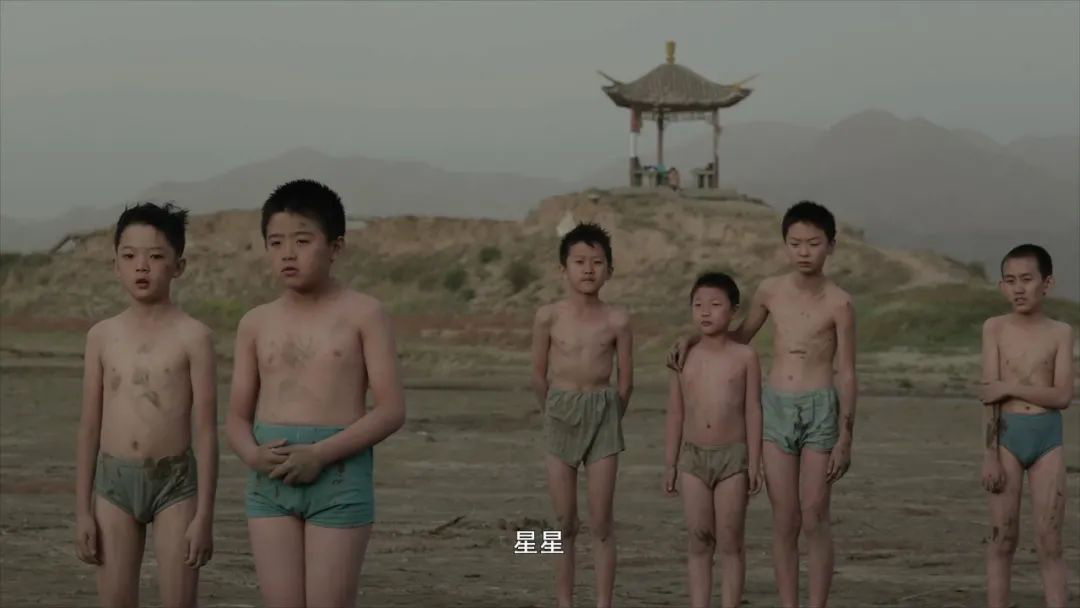
Han Tian: This is a question that I have been thinking about recently. Before I came to the forum, I saw [See Nara] directed by Pengfei. I liked it very much and it touched me a lot.
There may be a problem for our young directors, that is to say, when you go to a wider world from your particularly limited personal experience, when you want to make that effort, it seems that sometimes you feel a little uncertain or have no grasp.
Because before the films directed by Xiao Shuai, such as the earliest [winter and spring days] and [extreme cold] are the stories of people around you.
When I arrived at [the girl with the shoulder pole], I suddenly discovered a bigger world, and then I went back to my previous experience, the third-line story.
It’s such a broad expression of China’s contemporary history again. I don’t know if you ever felt that kind of confusion or how to overcome it when you went from your own experience to the bigger world at those stages.
Wang Xiaoshuai:I have asked myself about this matter, and my own answer to myself is that everything goes with the flow.
Your age, your experience to what extent, you were interested in it at that time, there is no problem.
You suddenly see that another director or another place in the world has come up with a very powerful thing. It’s no use worrying again, just be yourself.
Because I think time is the most important thing, and time is too powerful.
When you are filming, if you are in your twenties and thirties, it is unrealistic for you to think beyond a person of fifty.
So I think I should put myself in every process of my life, even if it is small.
Because there are many large-scale films that have achieved good results, but there are many trivial small films that are also very powerful. They are also very impactful and moving forward.
soDo what in what time period?.
For example, when you are 40 years old, it is true that when you look back at yourself or face a 30-year-old person, there are many things that cannot be communicated in words.
Only when you are forty years old will you suddenly care about that thing.
So we make our movie, and this movie is very happy, and we will minimize our pressure.
Of course, we have the responsibility, but you can be grateful for the pressure in that area.
There is no pressure on your next film, so that you can put yourself into real and pure creation and move up bit by bit until you are 50 years old.
For example, when I was forty years old, I didn’t dare to do [Forever]. At that time, I didn’t have that opportunity, and the society didn’t change to that time.
But just then, it was possible to deconstruct the film according to your 50-year-old view of the world, otherwise you couldn’t do that.
So time is a really, really good thing.
Han Tian: Thank you!

■ I remember asking the teacher a particularly stupid question when I graduated from college.
Teacher, how can I have life experience, because I felt at that time why all the stories I thought were so stupid.
But I was particularly anxious to have life experience. I didn’t know how ridiculous that sentence was until I finished writing this story and filmed it, including after I got married and gave birth to a child myself.
Then I think that every creator will have a group of like-minded creators.
In this process, in fact, everyone’s life experience is growing up with this work.
So I especially want to know about your time with the main creative, especially the director and some important partners.
What kind of way did you work with them and when you might choose some collaborators at first?
What kind of criteria do you use? I think this may also be of great help to young directors.
Is how to choose people, how to choose partners.
Wang Xiaoshuai:Many of my film collaborators, for example, most of our photographers are calledDi WuHe didn’t graduate from the Film Academy. He just made a few films for further study, which was also caused by the special environment and conditions I mentioned just now.
I wanted to make a movie at that time, and I said no, I was in a hotel, and I changed hotels every day at that time.
I’ll sneak in when a bed is empty in the film crew, and I’ll sneak out when people leave in the morning.
There is a bunk in the group bed, which costs ten yuan. I’ll buy a bunk to sleep in.
I fought guerrilla warfare like this every day in Beijing, and then I thought I couldn’t go on like this, and everyone would laugh at me.
Then I said that when I was filming, I called my old classmates and friends, and people thought I was crazy. What did you shoot?
I don’t know, it doesn’t matter if I don’t know, so we’ll shoot.
Then say how much money there is, and I say no, not a penny, then you are joking.
I said how much does it cost to make a movie now? Some people say that at least 800,000 yuan, that 800,000 yuan was the standard film cost of the film factory at that time. I said it was impossible.
Another one, it’s still the same. Whoever promised me absurdly is cooperating with me.
I can’t, because I don’t have the conditions,Director Liu Jie.That’s the man at that time.
I can’t find one, and I can’t find one. He came that year, and one person became two, and he began to move forward.
We didn’t have the conditions to choose people at that time.Actors like Liu Xiaodong and Yu Hong.Shoot what? I want to help you.
Because if you care about making movies, you can throw a few blocks away from us, and we will become people of different classes, and we will not be friends.
So encourage me to shoot quickly, otherwise these friends will not be able to be.
Introduce that this is the director, this is the painter, and this is from the Fujian factory. After all, it is a particularly primitive impulse to do this.
If the shooting at that time [the day of winter and spring] was incredible, I will tell you two nights.
It’s incredible that there are too many things. We don’t have much time to talk about this occasion.
Liang Ming: Director Xiao Shuai’s [Forever] photography director was from South Korea. He filmed [Crying], and later it was also done by an editor in Thailand. What opportunity made you think of cooperating with them?
Wang Xiaoshuai:This question is very good, if it is very straightforward, it is also because of change.
I want to change it. The original one is too familiar. I want to change it a little. When I changed it, I found that I really couldn’t find it because everyone was busy.
Everyone who knows the name is very busy.
There was a photographer who I won’t name. It was very good, so I went to him and decided. As a result, when we were about to set up a group, we suddenly called and said we couldn’t go. There was another film.
At this time, as soon as we discuss with the producer and stamp our feet, we will let our eyes go out and look abroad.
So we have looked for a lot abroad, and in fact we have already taken this step.
This is also the case with editors. I am too busy to give you a complete cut of your film, but I need a time.
I don’t want to cut it in a few days before we discuss it. I need a long process.
So we also found a lot of people, and then we found this editor, who was also very interested.
They have a great advantage, such as KIM coming here early after taking this job, he wants to see the scenery with you, he wants to discuss it with you, and he wants to figure out how to shoot it with you.
Generally, a photographer may have to come one week in advance, and he will come two months in advance, so he will spend all his time here, and so will the editor. He has decided to put aside all his work and do all this.
This is an experience that we have lost for a long time. Everyone is very busy, and there are many cases where one person leads an assistant. They also completely return to the most memorable creative way of the film, so it is also very interesting.
moreverMayShe is our screenwriter.
I don’t know what your future will be like. If it’s the same as before, I know that after this thing comes, I will do it in an all-round way, and there won’t be several books and tasks to write there. This is a very lucky point for us.
It shows that as long as we do this, it will actually ignite the inner fire of these people, and so will the actors.
After Yongmei came, she volunteered to experience life and learn to weave fishing nets at the seaside. She said that I didn’t catch all the plays here.
After Jingchun came here, everything was blocked, and I wouldn’t leave the film crew just because I wanted to have an activity. Our film crew didn’t leave, and we stayed there with or without a play.
Even other actors, obviously there is no play for a week, they will not leave, they will be on the scene and will not leave.
In this case, it is actually very rare. In such an impetuous environment, there are still such a group of people who can stay together and return to the most primitive way of making movies. This is a very lucky point.

Liang Ming: Is it expensive to communicate with Korean photographers?
Wang Xiaoshuai:The cost of communication is also a little bit. KIM is very funny. When asked if he can speak English, he said yes.
As a result, after we made a video, we found that I couldn’t understand a word of English he said. He knew a lot of words, but his Korean pronunciation was completely incomprehensible.
I found that he didn’t know much about what I said, so we were looking for a translator, and the translator we were looking for was very strict.
First of all, he should like this translation, then he should like to listen to what this translation says, and it is difficult to find such a person at last.
Then I chatted every day, but in fact, at the end of the day, in the previous preparatory process, it had nothing to do with the language.
It’s already a physical action, a feeling.
Then, after he caught this, I was very surprised at the scene. I clearly said that I would shoot like this, and his team put the machine there according to his method, and the small rocker arm got up.
I said what I wanted it for, and he ignored me, so he did. At the beginning, I said yes, let him play first, because he has been here for several months.
He suddenly came up with such enthusiasm that if you don’t follow his lead, there will be a gap in his heart, so he did it until he gave up.
Because he had to put that thing back and forth in a small space every time, I waited for him to do so and finally surrendered.
That is to say, light, very little light, don’t hit the light, he patted his chest.
As a result, he was lighting up all the time after filming, so I turned it off for him. I couldn’t talk and then turned it off.
All you have to do is turn it off. It’s fun.
In fact, sometimes in the whole communication process, a director doesn’t tell a lot, but this venue is here.
Everyone knows what happened to this matter.
At their age, such as Jing Chun and Yongmei, his common sense is there for our story, so he can do it.
Like the last grave-sweeping scene, I don’t know how to do it. It’s not that I don’t know how to do it. I can’t tell them how to do it.
I said that the machine was here, and he didn’t even know that we had built a grave in front of us. Then he put up a sign and said, Look for it, nothing, just sweep the grave without saying a word.
Everyone has experienced it, everyone knows what you are going to say, and I have no special requirements. In the end, they cried so hard that they didn’t stop.
Finally, he rushed over and said that the actor stopped asking directly in front of the machine and stopped.
If you have a scene, don’t destroy it, and don’t over-press the director’s intention, theme or anything.
Instead, you quit and let this gas field make this air automatically generate more vivid.

Han Tian: Do you have a lot of improvisation elements in the movie or are they all designed?
Wang Xiaoshuai:I feel more and more like doing scripts.sturdy.
When I was young, I didn’t have a script and had half of it. Later, I felt that the script was not important, because it was really a workshop at that time.
You can improvise, everyone has short time and short films, but I find it more and more.
At this time in Cannes, when the big screen in Venice comes out, you can’t improvise.
There are not many Wong Kar-wai in the world, so I can’t do it. I want to do the script well. This is my experience.
Because this is a foundation for confidence, with the script, you can dispatch at random when you arrive at the scene, and you can judge according to that space.
Because I once said,How a director feels at first.It’s very important, it’s very important for life, for yourself, for your heart and for your feelings about the world.
After that, it is.selectYou have to choose what to do, what direction you have to choose, and when all this happens, you have to judge yourself.
For example, your judgment is very important when the actors are finished or the script is written to this extent, or when you are at the scene and many people ask you how you are.
That’s when I found that the director had a strong sense,Director’s judgmentIt’s very accurate, but some people can’t, some people are in a fog, and the actors don’t know what’s going on after acting a hundred times. None of this works.
I think judgment is very important, and then it is necessary toThere is a smell.
If the most advanced thing in your movie is that you can shoot out the air and the taste, it will be great if you can shoot out the curry flavor in Indian movies or the taste of the sea breeze blowing on the surface in Japan.
Like Hou Xiaoxian’s early taste, it goes down to the top.attitudeWhat I just said is not the theme but your attitude.
What’s your attitude towards your movies, your characters, the fate of these people, your country, your society, your nation and your values?
Attitude is the last thing. If you have everything, you will be nothing if your attitude collapses.

Jingran: Sometimes actors are people after all. In fact, the best charm of the scene is the chemical reaction.
But that kind of chemical reaction can only be created in position. What do you suggest, director and actor?
Wang Xiaoshuai:I’m also an actor. I seldom talk to him about reason and drama from beginning to end. I won’t do that.
Because I think he will die there, and there will be no spark of chemical reaction in the future.
The director is a very powerful position in that position. You don’t say anything, and you are watched by the actors.
So I think it’s strange for some directors to lose their temper at the scene, and it’s unnecessary, because you have been so important.
If you lose your temper again, the whole group will collapse and the actors will collapse.
In fact, you can’t get better. Sometimes if he is wrong, he is already very sensitive when he is wrong.
I often don’t look at him, I ignore him, I don’t say anything, they say I don’t know, and I subconsciously say you have a habit.
If it’s not done properly, if this short clip is wrong, you will come over and you will cross when you get to the actor.
When someone is waiting for you to speak, you cross over. Once around, the actor knows what you want to say, but if you don’t say it, it will form his own pressure.
Plus, you should cherish every word of yourself, because you are too important, and everything you say is one.





